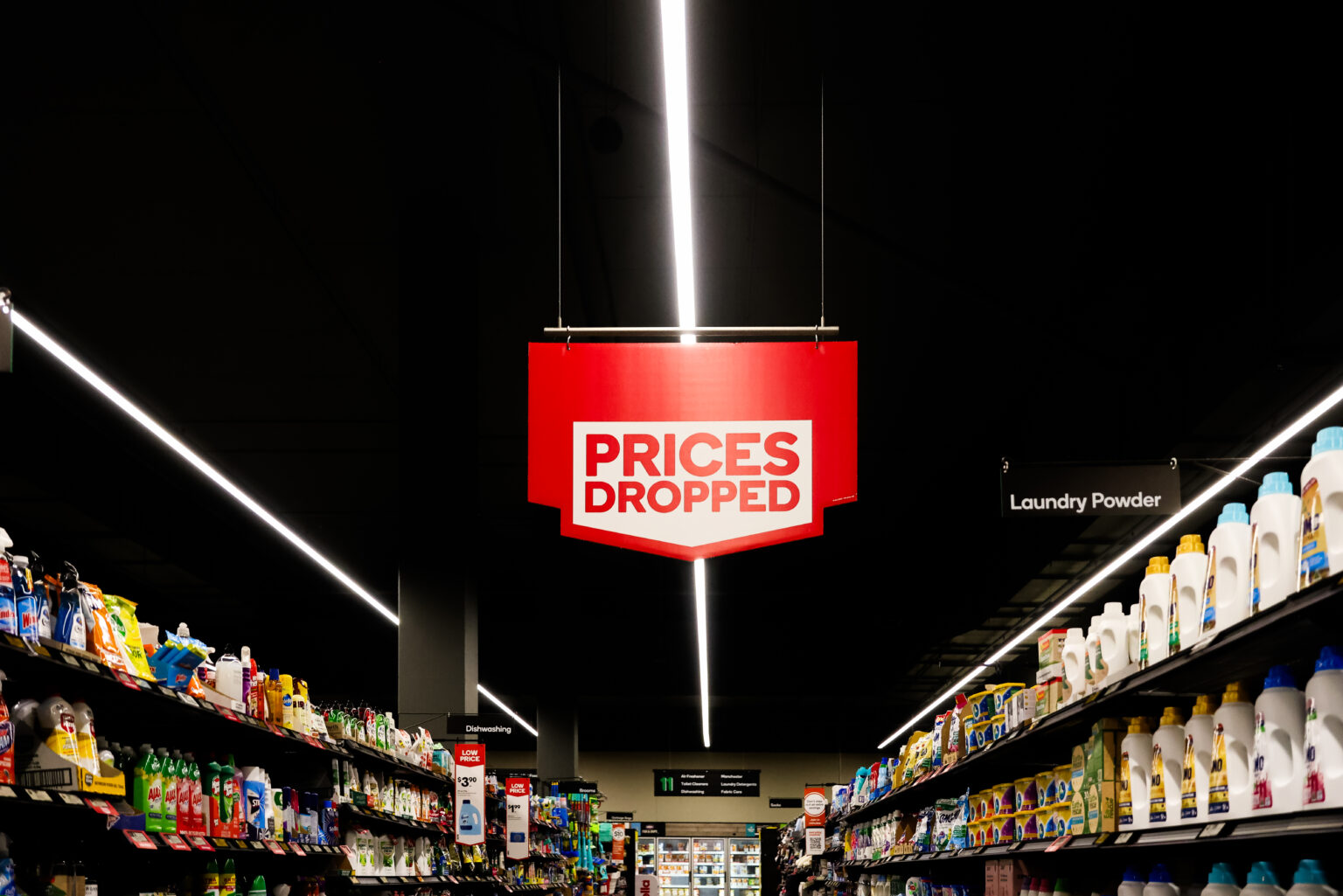In an era of rising inflation and tighter budgets, consumers are increasingly scrutinizing their receipts — and finding deceptive pricing practices.
A recent spate of class-action lawsuits and regulatory enforcement highlights a concerning trend: retailers and supermarkets misleading customers about prices using increasingly complex and nuanced tactics.
These complaints and investigations have revealed startling tactics supermarkets use to push shoppers into spending more on food and drink items.
Here are a few deceptive pricing practices to watch out for.
“Promotional” Pricing
One alarming trend is the evolution of promotional sales.
Initially, consumers were enticed with simple offers like “buy one, get one free.”
However, this has transformed into more complex schemes, such as requiring the purchase of multiple items to qualify for discounts—think “buy five for $10,” “buy two, get one free” or “ten for $10.”
For example, a stand of sodas may have pricing suggesting “three for $5,” but with a caveat. Mix-and-matching different kinds of sodas — even those all on the same stand — may disqualify the items from the promotion.
Consumers may select three sodas, all from the stand with the promotional pricing, believing they qualify for a discount, only to discover that the deal applies solely applies if the three selected are all of the same type of soda.
In October 2023, Safeway settled a lawsuit regarding misleading “yuy one, get on” deals for $107 million.
Buying Larger Quantities Isn’t Always Cheaper
Bulk purchasing, once a reliable way to save, has also come under scrutiny. Many consumers assume that larger quantities will translate to lower prices per ounce. However, this is not always the case; shoppers may find that a larger box is more expensive per ounce than its smaller counterpart.
In @notsoprodad‘s TikTok video, two volumes of isopropyl alcohol, commonly used as a cleaning agent on a “buy one, get one” deal. A 16-oz bottle’s listed price is $2.99, while the 32-oz bottle of the same product is $8.99.
Despite being the larger bottle, the 32-ounce bottle is double the volume but three times the price.
One workaround is to check the per-per-weight unit on a given product in two different sizes.
But as the TikToker’s video also showed, checking the “price per unit” would have been even more misleading.
The 16-ounce, $2.99 bottle’s “per unit” price is shown as $5.98 for the buy one, get one price. For the 32 ounce, the BOGO price shows $4.50, despite being three times as much for a single bottle. The price is shown in the same positioning, coloring, and sizing for both bottles.
But a closer look reveals that the $5.98 per “unit” price using quarts as a unit. The $4.50 price is listed with the unit as a pound. There are approximately two quarts in a pound. Ultimately, the price for the smaller bottle is still cheaper.
In other words, the store is leveraging the consumer’s assumption that 1. buying in larger quantities is cheaper and 2. the units of measurement in the “price per” listings in the same.
Tag Price and Point-of-Sale Discrepancies
A recent lawsuit against home improvement store Home Depot alleges the retailer listed prices for products throughout the store.
When prices were scanned at checkout, prices jumped. Because the price difference was generally small on a per-item basis, most customers didn’t notice. However, across many customers and items, retailers can rack in millions using this pricing tactic.
Earlier this month, several California district attorneys filed a lawsuit against grocers Vons and Albertsen’s for charging more at the point of sale than the lowest listed price. The grocer giant’s settled the suit for $3.9 million.
Pay-by-Weight Deception
Perhaps one of the most insidious practices is known as “pay by weight.” Recent investigations have highlighted that some retailers, including Walmart, have been accused of inflating the actual weight of products and charging customers accordingly.
Multiple lawsuits against Walmart allege mislabelled items, overcharged for clearance goods, and manipulated scales for products like meat and vegetables. This practice has prompted legal action under the Florida Deceptive and Unfair Trade Practices Act.
Deceptive Packaging
In addition to these deceptive pricing strategies, packaging can also play a role in misleading consumers.
Packaging design can create the illusion of greater volume, leading consumers to believe they are purchasing more product than they actually are.
Moreover, various packages and containers may only be filled partially, giving the impression that there is more product than their really is.
In September, a class-action lawsuit was filed against Skinny Pop, a dairy free pre-popped popcorn brand for mislabeling their bags with deceptive weights and cup amounts.
“Plaintiffs believed they purchased SkinnyPop popcorn containing the amount, volume and/or serving of popcorn stated on its labels, when in fact, upon Plaintiffs’ experience, SkinnyPop Popcorn bags contain up to approximately 43% less than what is promised,” the complaint reads.
Consumers Should Be Vigilant About Deceptive Pricing Practices
The matter may warrant legislation. California recently passed a bill requiring pricing be clear upfront — not after the fact or at point of sale.
Still, as deceptive pricing practices become increasingly complex, it is essential for consumers to remain vigilant. By recognizing these red flags, shoppers can protect themselves from being overcharged at their local supermarkets.


